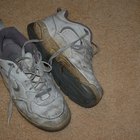
monkeybusinessimages/iStock/Getty Images
Keeping a household inventory checklist can simplify the difficult process of fairly dividing household items ina divorce. Household inventory lists documents all furnishings, appliances and personal items inside the home, as well as their assessed value, since a court would likely not divide household items and personal property in a divorce settlement. A similar checklist is typically prepared at the beginning of a marriage for insurance purposes in the event of a fire or other disaster, but household inventories are invaluable during a divorce as well.
Furniture
Documenting the value and purchase of large furniture items provides guidance for dividing some of the largest items in the house. Go through each room one at a time. For each room, record the large items of furniture and their estimated value. Couples should mutually agree on whoever most uses the item or most needs the item. Be sure to include major items like couches, beds, desks and bureaus, as well smaller items like nightstands, coffee tables and bar stools.
Electronics
Electronic items are frequently some of the most valuable items in a household. Document electronics room by room. Include the manufacturer and model number so value assessments can be verified by a third party in the event of a dispute. Include televisions, media players, speakers and receivers, as well as home-wide surround speakers and alarm systems. Include electronic accessories in the same section, so all items that require additional parts will be included together. For example, DVDs should be included with the DVD player.
Antiques and Collectibles
Antiques, collections and inherited items hold immense retail and sentimental value. Bring antique items to a reputable appraiser so an accurate estimated value is included in the checklist. Collectible items like coins, stamps or dolls can be notoriously difficult to assess without the assistance of a professional. Ideally, each item in the collection should be individually documented and assessed with images, if possible. Inherited items are typically acquired with a specific recipient and value assessment. Since inherited items are automatically the separate property of the spouse who received them, no determination would likely be necessary.
Specialty Items
Specialty items are difficult to classify, but typically they include items in the house that were custom installed or built. Built-in shelving units and custom island countertops fall into the specialty category. It is unlikely either party would be interested in removing the items, but they should still be included in the inventory in the unlikely event that one party is interested in keeping them because of their value and custom design. Only include items that could feasibly be removed from the home; a custom wood floor is not a candidate for the checklist.
Children's Items
Children's items are particularly difficult to assess or assign to either party, as parents believe they belong to the children. However, children's items should be included in the checklist, because they can be included in the total inventory. Although children's toys and furniture should be included in the value assessment, some parents may decide not to assign a specific owner to those items.
Related Articles

How to Price the Worth of Household ...

How to Cater Your Own Party

How to Decide What Is a Fair Price to ...

What Is Consignment?

How to Organize a Clothing Drive

How to Keep Sharpie from Fading

What Is the Proper Gift for People ...

How to Get Personal Belongings Back ...

How to Deal With a Mother-In-Law That ...

Why Can't You Return Unworn Nike Shoes ...

How to Organize Community Service Events

Do a Bride's Parents Give a Wedding ...

Traditional Indian Wedding Gifts

Sponsor Thank You Gifts

How to Get a Tax Exempt Certificate for ...

How to Remove Stainless Steel Links ...

How to Remove a Hang Tag

How to Visit an Inmate in a California ...

What Does Couture Mean in the Fashion ...

How to Spot Fake Bape Clothing
References
Writer Bio
Hannah Wahlig began writing and editing professionally in 2001. Her experience includes copy for newspapers, journals and magazines, as well as book editing. She is also a certified lactation counselor. She holds a Bachelor of Arts in English from Mount Holyoke College, and Master's degrees in education and community psychology from the University of Massachusetts.
Photo Credits
monkeybusinessimages/iStock/Getty Images